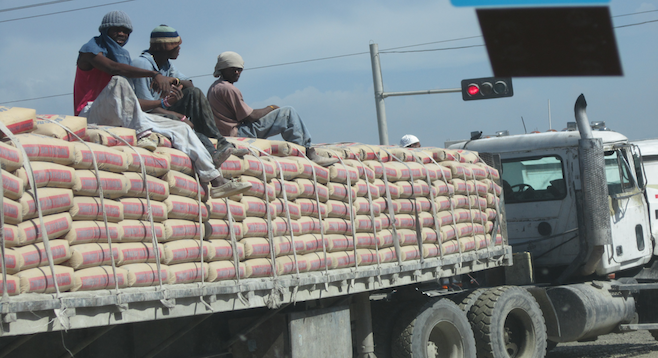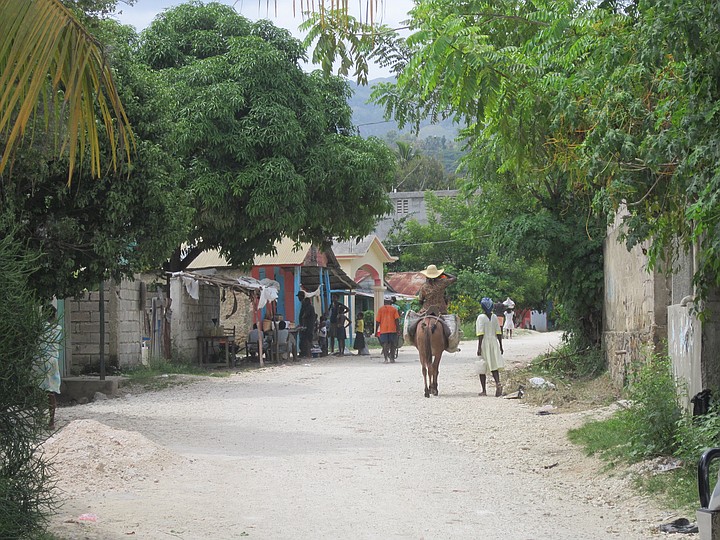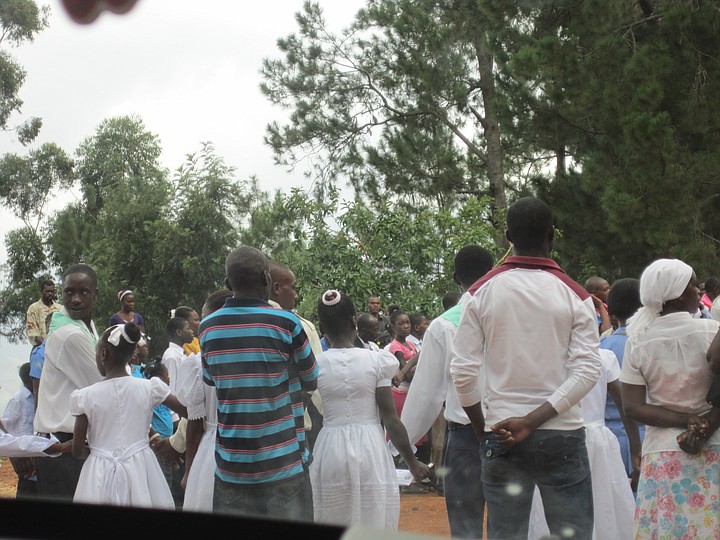 Facebook
Facebook
 X
X
 Instagram
Instagram
 TikTok
TikTok
 Youtube
Youtube

Only three hours in Haiti, I'd seen forms of travel that spanned hundreds of years – a woman on a mule, a man on a horse, people walking, riding bicycles and on mopeds, brightly colored taxis called tap-taps, tractor trailers, the truck my friends own, and of course, the airplane I flew in on.

Many of these forms of transportation were subject to hitchhiking, too. Meaning, if there was space in or on that vehicle, and someone needed a ride, it wasn't unusual for a traveler to hop on.
During one of our trips from the capital to the country, we had several Haitians hop in the back of our truck, getting out when they found themselves where they needed to go. That's not unusual. For Haitians, a tap-tap is simply too expensive and many must walk the miles between home and the marketplace – or even more necessary, church.
Attending church is Haiti is a grand celebration not to be missed. Haitians put on their best clothes, clean and pressed, and make sure they have the best spot for service.

At once point during our drive, I was certain we'd reached the end of a road, but Jamie assured me we still had several miles to go before we made it to our destination. In front of us, a great crowd poured into the street, which by now looked to me like a grass-covered parking lot, forcing us to stop.
Little girls ranging in age from probably six to sixteen dressed in white from head to toe joined hands and sang beautifully as they formed a large circle. Other churchgoers made their way outside and circled them. A small band exited last and played one final chorus before a well-dressed man stood in the center of the circle and offered a prayer for the city of Furcy during its celebration. This short service reminded me of some of the small town celebrations I'd attended as a child in rural south Georgia, mixing God with grits and our Sunday finest.
Even within its own borders, there are years of difference between the miles that separate city living and country life. Headed to see a family in one of Jamie and Ali's social services programs, we spent three hours rounding corners and balancing on narrow paths as we climbed a mountain to a remote and close-knit village of several homes.

Along the way, we crossed dry river beds, now used as trash piles, through which children forge a path and from which family-owned farm animals feed. We crossed flowing river beds in which women wash laundry (left) and children bathe.
It's not hard to imagine that for rural Americans, some of these ways of life are part of a not too distant past.
And I watched the women work. And I saw the children play. And I embraced the family who smiled when we arrived at their home, delivering formula to the father of a newborn whose wife died during childbirth. And I felt a connection to a country that so resembles my own with a hardworking, proud, and honest people who invite their neighbors in for supper, over for church, and back for a visit the next time around.


Only three hours in Haiti, I'd seen forms of travel that spanned hundreds of years – a woman on a mule, a man on a horse, people walking, riding bicycles and on mopeds, brightly colored taxis called tap-taps, tractor trailers, the truck my friends own, and of course, the airplane I flew in on.

Many of these forms of transportation were subject to hitchhiking, too. Meaning, if there was space in or on that vehicle, and someone needed a ride, it wasn't unusual for a traveler to hop on.
During one of our trips from the capital to the country, we had several Haitians hop in the back of our truck, getting out when they found themselves where they needed to go. That's not unusual. For Haitians, a tap-tap is simply too expensive and many must walk the miles between home and the marketplace – or even more necessary, church.
Attending church is Haiti is a grand celebration not to be missed. Haitians put on their best clothes, clean and pressed, and make sure they have the best spot for service.

At once point during our drive, I was certain we'd reached the end of a road, but Jamie assured me we still had several miles to go before we made it to our destination. In front of us, a great crowd poured into the street, which by now looked to me like a grass-covered parking lot, forcing us to stop.
Little girls ranging in age from probably six to sixteen dressed in white from head to toe joined hands and sang beautifully as they formed a large circle. Other churchgoers made their way outside and circled them. A small band exited last and played one final chorus before a well-dressed man stood in the center of the circle and offered a prayer for the city of Furcy during its celebration. This short service reminded me of some of the small town celebrations I'd attended as a child in rural south Georgia, mixing God with grits and our Sunday finest.
Even within its own borders, there are years of difference between the miles that separate city living and country life. Headed to see a family in one of Jamie and Ali's social services programs, we spent three hours rounding corners and balancing on narrow paths as we climbed a mountain to a remote and close-knit village of several homes.

Along the way, we crossed dry river beds, now used as trash piles, through which children forge a path and from which family-owned farm animals feed. We crossed flowing river beds in which women wash laundry (left) and children bathe.
It's not hard to imagine that for rural Americans, some of these ways of life are part of a not too distant past.
And I watched the women work. And I saw the children play. And I embraced the family who smiled when we arrived at their home, delivering formula to the father of a newborn whose wife died during childbirth. And I felt a connection to a country that so resembles my own with a hardworking, proud, and honest people who invite their neighbors in for supper, over for church, and back for a visit the next time around.
Comments